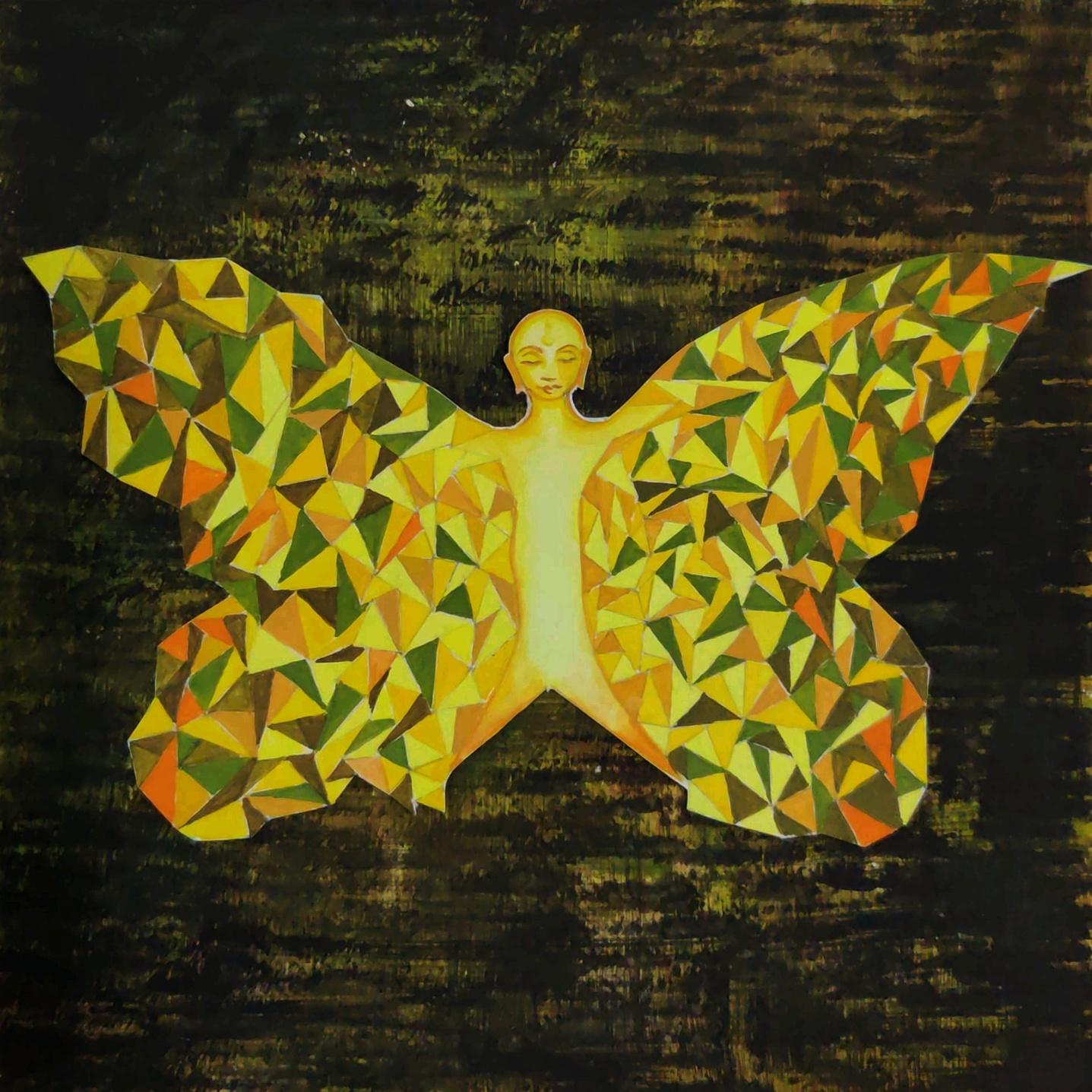How Caterpillar Turns Into A Butterfly

IMAGE OF THE WEEK
We are grateful to Rupali Bhuva for offering this hand-made painting for this reading.

If you kneel down on the ground and look at a caterpillar very carefully,
you'd probably think he's a pretty nice furry fellow
with a rather boring life.
And you would be right.
BUT ...
the caterpillar does have one big surprise for you,
which is the story of how he becomes a butterfly.
For most of his life
all our caterpillar does is crawl around on leaves and plants,
up and down, down and up, up and down,
eating and eating and eating.
Yum, yum, yum.
Until one day, our furry little caterpillar starts to spin long silky threads!
All around himself he weaves a beautiful little chrysalis
Round and round and round and round and round
until he is completed surrounded by strong silken walls.
After our caterpillar has finished weaving his chrysalis,
there start to appear in his body
cells that have never been there before.
The caterpillar's new cells are called 'imaginal cells.'
They are so totally different from the caterpillar cells
that his immune system thinks they are enemies... and gobbles them up.
But these new imaginal cells continue to appear. More and more of them!
Pretty soon, the caterpillar's immune system
cannot destroy them fast enough.
More and more of the imaginal cells survive.
And then an amazing thing happens!
The little tiny lonely imaginal cells start to clump together
into friendly little groups.
They all resonate together at the same frequency,
passing information from one to another.
Then, after awhile, another amazing thing happens!
The clumps of imaginal cells start to cluster together!
A long string of clumping and clustering imaginal cells,
all resonating at the same frequency,
all passing information from one to another there inside the chrysalis.
Then at some point,
the entire long string of imaginal cells
suddenly realizes all together
that it is something different from the caterpillar.
Something new! Something wonderful!
...and in that realization
is the shout of the birth of the butterfly!
Since the butterfly now "knows" that it is a butterfly,
the little tiny imaginal cells
no longer have to do all those things individual cells must do.
Now they are part of a multi-celled organism—
A FAMILY who can share the work.
Each new butterfly cell can take on a different job—
There is something for everyone to do.
And everyone is important.
And each cell begins to do just that very thing it is most drawn to do.
And every other cell encourages it to do just that.
A great way to organize a butterfly!
Norie Huddle has written seven published books on environmental issues and on transforming humanity. Growing up in the woods of northern Virginia, doing a 9-month, 5000-mile bicycle trip across America, and now living in Ecuador have been been formative experiences for her. Above passage is from her 1990 book, Butterfly.
SEED QUESTIONS FOR REFLECTION: How do you relate to the process of transformation of the caterpillar into a butterfly as a metaphor for your own journey? Can you share an experience where you could see your own emergence as similar to the butterfly's emergence? What helps you recognize that you are constantly emerging from your past caterpillar self into your present butterfly self?